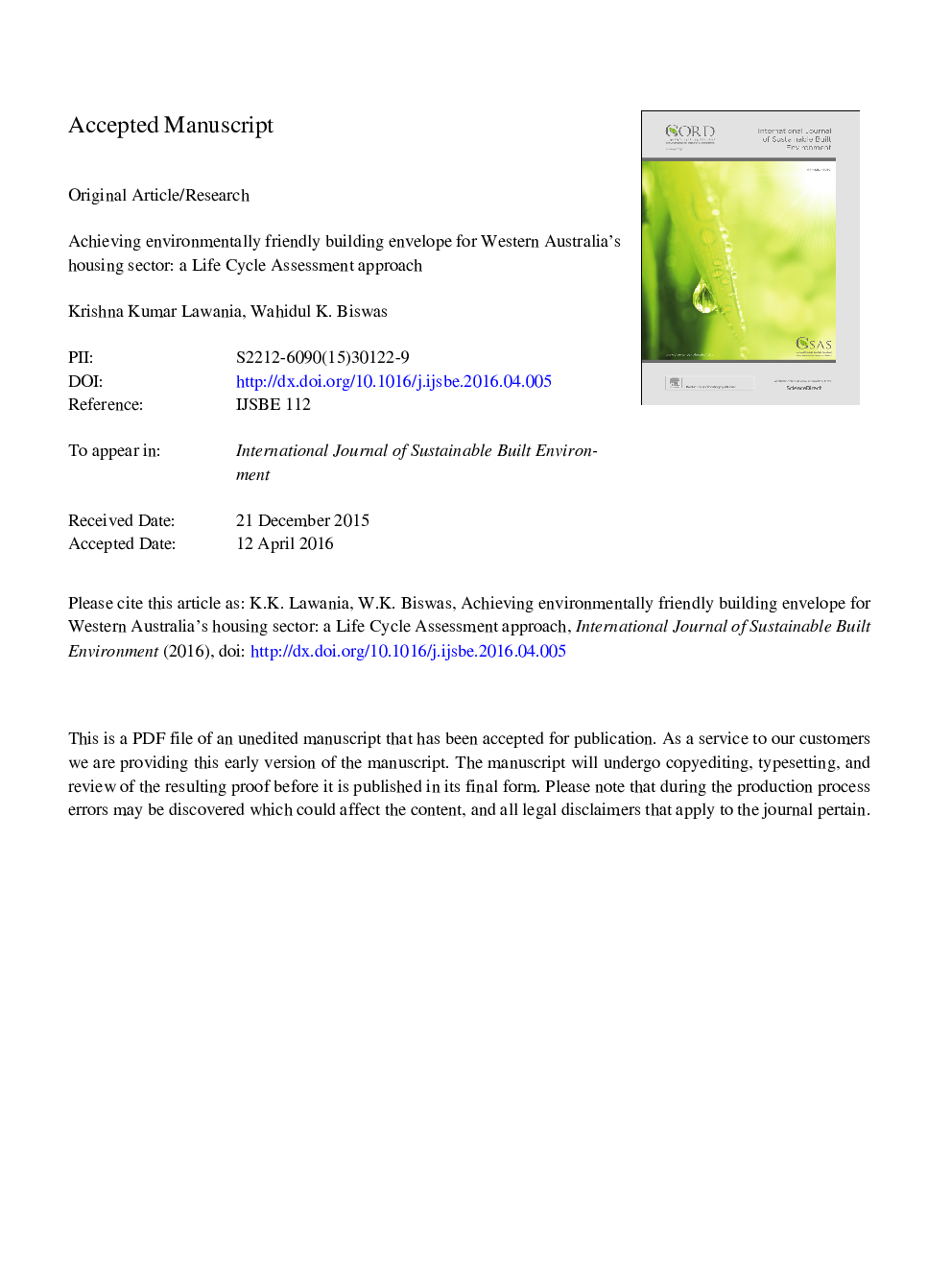| Article ID | Journal | Published Year | Pages | File Type |
|---|---|---|---|---|
| 6659546 | International Journal of Sustainable Built Environment | 2016 | 42 Pages |
Abstract
The rapid growth of Western Australia's population and economy will affect the sustainability of its building sector. The energy consumption of all processes during mining to material production, transportation, construction plant and tools, and operation (heating, cooling, lighting, hot water and home appliances) stages causes high greenhouse gas (GHG) emissions and embodied energy (EE) consumption. The literature review to date have confirmed that the building envelope consisting of exterior walls, windows, external doors, roof, and floor could significantly affect the energy consumption during operation stage. Australian construction industry could thus enhance the energy efficiency of the building envelope in order to achieve its GHG emissions reduction targets. This paper has assessed the GHG emissions and EE consumption associated with the construction and use of a typical house in Perth for sixty building envelope options using a life cycle assessment (LCA) approach. The results show that the building envelope consisting of cast in situ sandwich wall with polyethylene terephthalate (PET) foam core, double glazed windows, and concrete roof tiles has the lowest life cycle GHG emissions and embodied energy consumption.
Keywords
LGTTKMTimber frameGHGSLCAIPCCLCIEuPCSIROWater heaterLCAStreamlined life cycle assessmentLife Cycle AssessmentWestern AustraliaGHG emissionsEmbodied energyISOLightingInternational Organization for StandardizationCommonwealth Scientific and Industrial Research OrganisationHome appliancesCarbon dioxide equivalentLife Cycle InventoryMega jouleIntergovernmental Panel on Climate ChangeBuilding envelopeGreenhouse gasHAp
Related Topics
Physical Sciences and Engineering
Chemical Engineering
Chemical Engineering (General)
Authors
Krishna Kumar Lawania, Wahidul K. Biswas,
